

ASTROQUEYRAS - MISSION 2016 - W39 .


ASTROQUEYRAS
- MISSION 2016 - W39
.
TOPIC :
Deep Sky Imaging "Very High Resolution and Lucky Imaging".
MAIN TARGET
: G1, Mayall II, a Globular Cluster of the Andromeda galaxy M31. mag : 13.8 https://en.wikipedia.org/wiki/Mayall_II
.
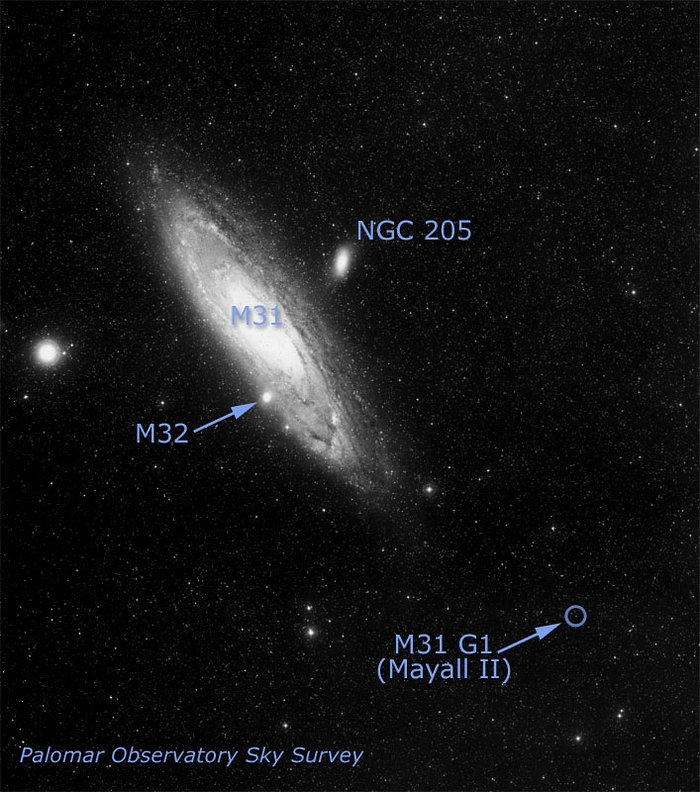
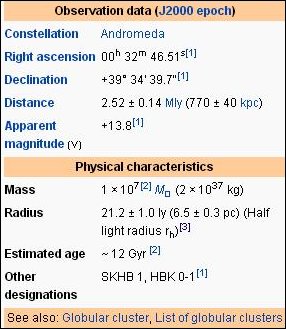
OBJECTIVE and challenge:
Start by star resolution on the outskirts of the cluster . No picture made by
amateur, find on the net !
Beginning of resolution on an image of our
friend Christian Dupriez
with a camera SBIG ST10 XME / C11 F10 Edge and 210mn of long exposures .
http://www.astrosurf.com/chd/
Here is a 100% crop !
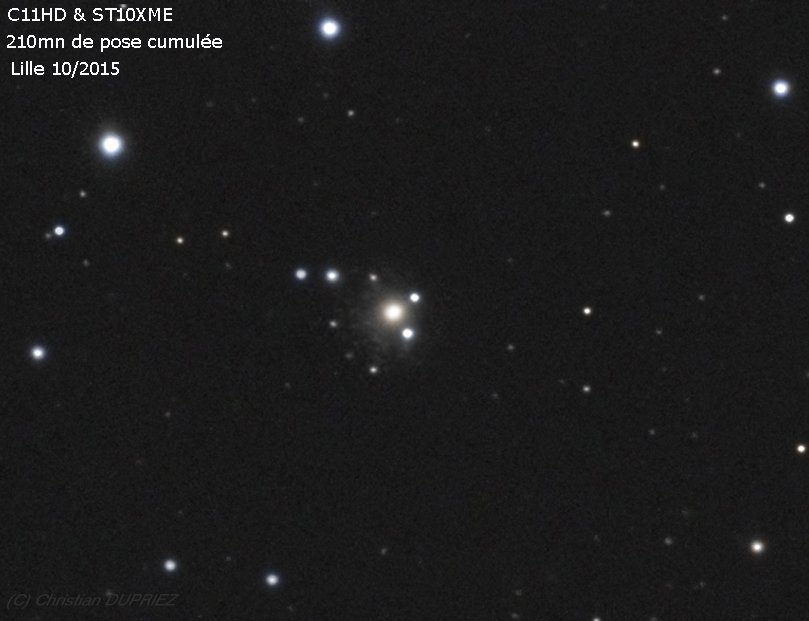
http://www.astrosurf.com/ubb/Forum3/HTML/045408.html (french).
MAYALL II by the Hubble
Space Telescope
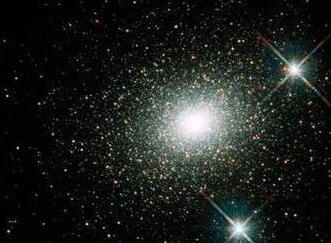
Interesting debate about it on the forum of "Astrosurf" in 2003. (French) http://www.astrosurf.com/ubb/Forum3/HTML/001387.html
ADVANTAGES OF THE "STATION SAINT
- VERAN "
- Pic Château-Renard 2936 m - in the Hautes Alpes (05).
http://www.astroqueyras.com/
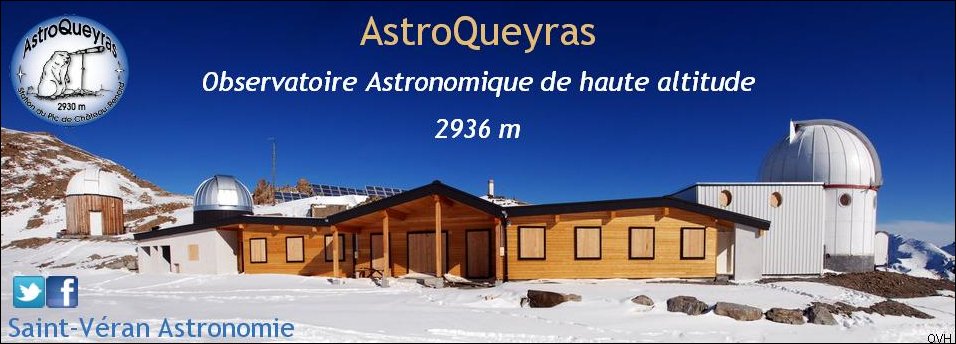
High mountain observatory at 2936 meters - Seeing very good - one of the best in Europe .
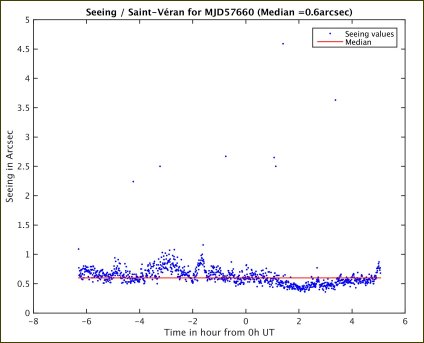
Mission early October : moonless
period and G1 almost at the Zenith in the middle of the night .

Advanced telescope
under Ashdome: T500 mm (Ritchey Chretien 20 ")
open F8 - focal length 4000mm .
http://www.astrosib.ru/rc_500.html

Precise
Mount :
AstroPhysics 1600 GTO
http://www.ovision.com/AstroPhysics_1600GTO.html
CMOS camera:
ZWO ASI 1600 monochrome cooled with a very low readout
noise .
Sensor: 4/3″ CMOS
Diagonal: 21.9mm
Resolution: 16Mega Pixels 4656×3520
Pixel Size: 3.8µm
Max FPS at full resolution :23FPS
Shutter: Rolling shutter
Exposure Range: 32µs-2000s
Read Noise: 1.2e @30db gain


With a focal length of 4000 mm, sampling of the sensor (pixel of 3.8 microns) is E = 206 x3.8 / 4000 = 0.2 arcsec/ pixel .
A good PC with a acquisition
software FIRECAPURE and processing performance PRISM .
2 teammates in phase who believe in : Robert CAZILHAC and Mathieu SENEGAS with a good CCD imaging experience.
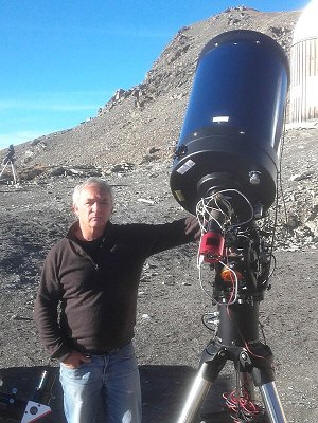
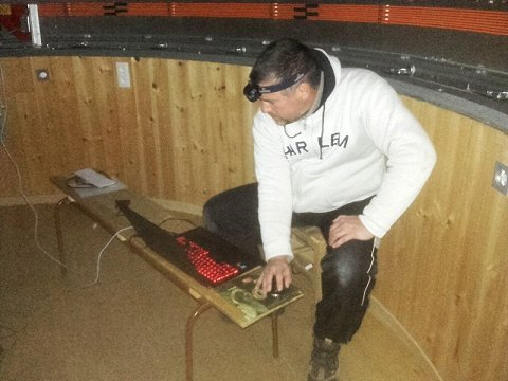
Robert and the Meade 14 "SC on mount CGE PRO! Mathieu and his "PC" at the base of the T500
THE ACQUISITION
CONDITIONS :
Image with very short exposures as
10s to limit turbulence, avoid saturation of the cluster and work without
autoguiding .
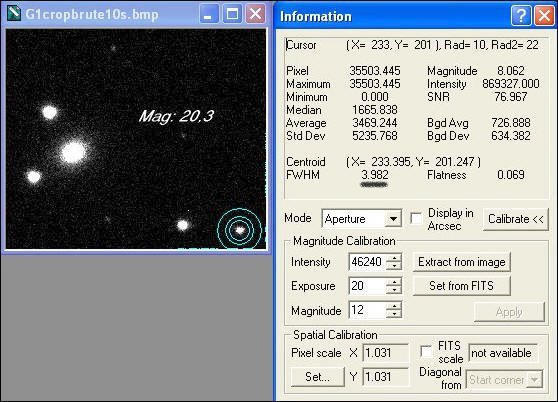
10s poses was considered as
a good compromise according to the local seeing (1 arcsec ) and the necessity to
capture photons of individual stars in the cluster.
In 10s magnitudes 22/23
photons are rare but present on test images (after addition of a few tens of
poses .
The gain was chosen strong
enough to be sure to optimize the low Readout Noise of the camera at the expense
of saturation of the core!
On this camera offset
(brightness) must be adjusted with the gain to avoid having a zero sky
background (blue histogram in FireCapture).
Repeat very sharp focus all approximately 100 images
with the accurate system Robofocus and PRISM ( manual control ) .

Control of the histogram and focus with the "magnifying glass".
Reduce to minimum of stray light
because the tube is "opened" and the dome with steel !
Collimating the mirrors has not been made after
checking on preliminary pictures .
Make a careful selection of images with sorting
software by measures of FWHM and elongation of 4 stars, while keeping
a significant number of exposures to get the highest S
/ N.


Visual
sorting and batch comparison .....
Star and visualization software
EXCEL
Take breaks ... without deconcentration :-)
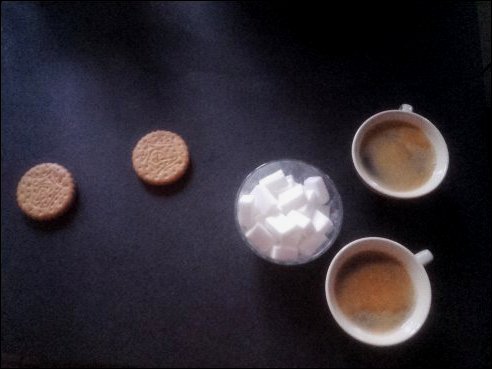
PREPROCESSING
(reduction) in the state of the art with
DARKS ,FLATS ......
PROCESSING
rigorous and well proportioned not to create artifacts
or additional noise. Logarithm, DDP .... to desaturate the heart of the
cluster
and highlight the peripheral stars very tight !
THE RESULTS :
The first displays were made 'windowing' images around G1 to speed up processing.
The day after acquisition: fast processing -
DDP with Prism + RL2 10 0 with IRIS - 100% crop . No sorting of images
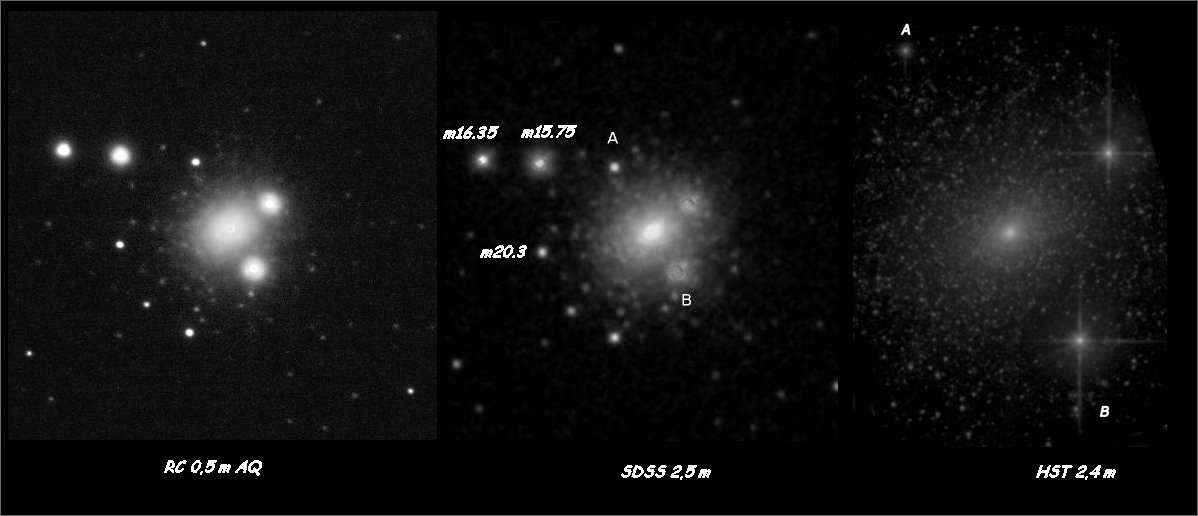
Comparison with the only existing images (in grayscale ) ... A good start :-)
G1 seems small on full frame image (4656X3520) ! Subframe on G1 for final image .
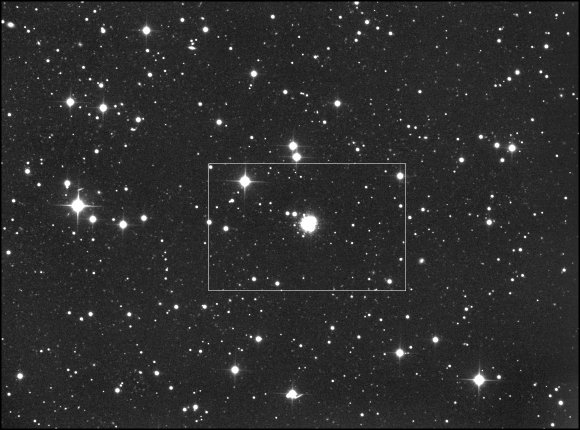
THE FINAL IMAGE :
Christian Dupriez Processing (with our preprocessed image ) . IRIS and Photoshop .
Light coloring with the color layer of its image in 2015 .
Stack of 590 images (10s) sorted . This gives about 100 minutes total exposure with a real FWHM of 1arcsec ( sampling of 0,2arcsec / pixel) .
More strict sorting and better preprocessing perhaps would go down to 0.8 arcsec .
Image 50% click on the image to view it at 100% (1556 x 978 pixels - 10% of the field only)
Crop Image 100% .... Click on the image to show 200%
Image "full frame" (15 'x 10') Binning 4 - addition of 806 unsorted poses 10s - Fast processing - Image 50% - Click on the image to 200%
Comparison with SDSS 9 color image . Click on the image !
Our(1h40) image is identical in magnitude limit and I think slightly higher in resolution with a less noisy sky . :-)
CONCLUSION :
Our objective is achieved and exceeded !
The excellent weather and equipment at our diposal greatly helped us, but especially the new camera ZWO ASI 1600 monochrome which enabled us to achieve this result .
Having Mayall II centered on the sensor we could not capture Mayall III (slightly resolved on the image of SDSS9) on all frames, in near field close to a beautiful galaxy !
Some stars are resolved after stacking a few timages where it appears :-) It will be for next time !
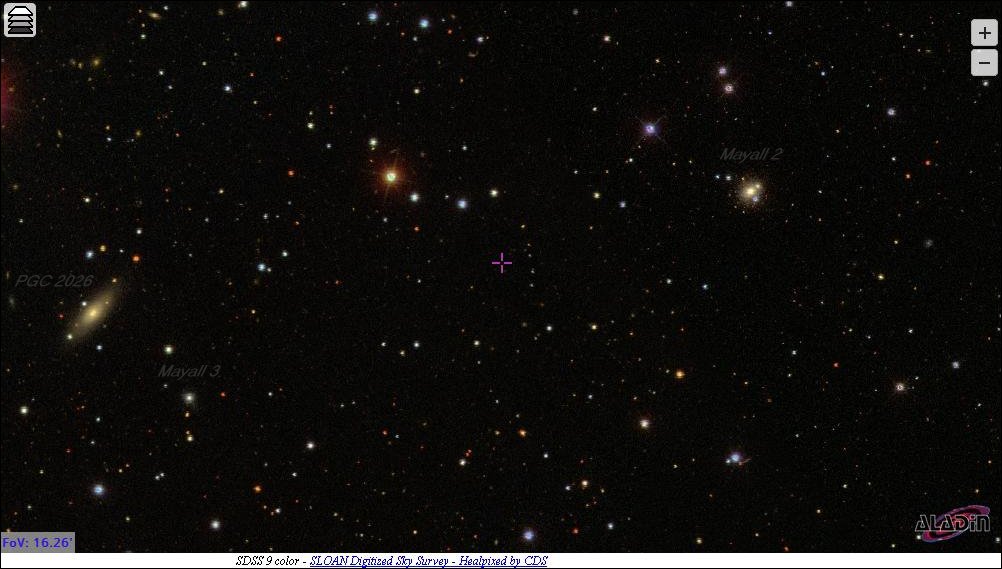
Here are some comparating montages to better visualize the size of Mayall II and the depth of this Deep Sky image ....m24 !
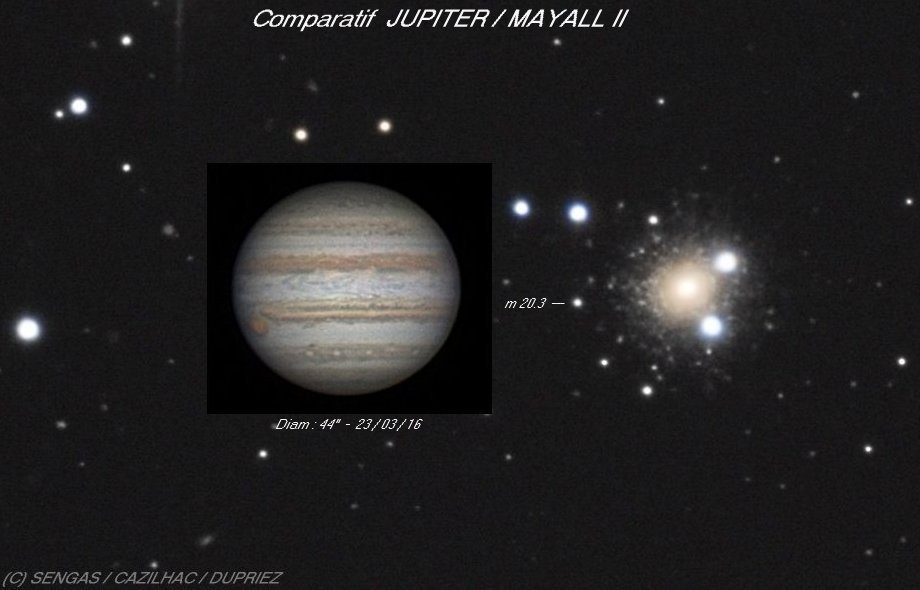
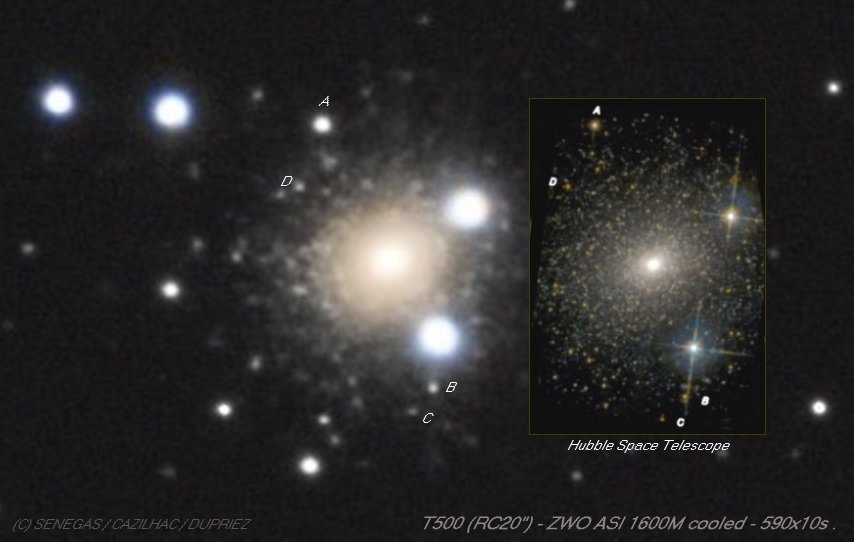
To conclude, I will put forward Associations as AstroQueyras, that allow amateur astronomers of all levels to image in ideal conditions with high quality
telescopes.
The acquisition of new very powerful cameras at affordable prices is very promising for the amateur Astronomy !